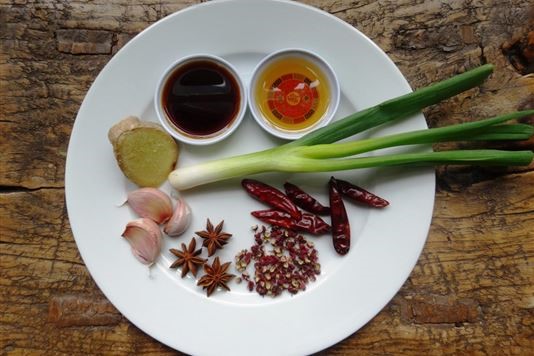
One day in New York, textile artist Ilya Fisher discovered Sichuan food. Now she's the cuisine's most devoted advocate. Here she explains what it's all about, and why you'll love it.
The power of a book
Has a book ever changed your life? It has mine. I picked one up, a memoir about living in China, when I was in New York a few years ago, and I haven’t been the same since.
I grew up in London with Cantonese food and exotic dim sum, so I’ve always had a liking for the lightness of Oriental food. But this book was really an explosion in my life, because it introduced me to the food of one province in China – Sichuan. French food took a tumble to second place, and I took to learning about Sichuan cooking, taking Mandarin lessons, travelling around China on an incredible gastronomic tour, and converting my friends to this most exciting of all cuisines.
China is a vast country – over 9.6 million square kilometres – and the land ranges from the mountainous Himalaya to the arid Gobi desert, with frozen winters in the north down to tropical Hainan in the south. It’s considered to have not one but eight regionally-based great culinary traditions. One of these is the food of Sichuan, which is popular with the Chinese, and, increasingly, the British.
A numbing spice

Sichuan pepper (not a true peppercorn) has an intense spicy taste that develops and can even temporarily numb your mouth and lips. It is the woody husk around the inedible hard black seed that is used in cooking. To prepare, it is usually dry-fried until its fragrance fills the air and then ground in a pestle and mortar. The Chinese have a descriptive term, ‘ma-la’, where ‘ma’ refers to the spicy numbing Sichuan pepper, and ‘la’ to the spicy heat of the chilli pepper. A good example of a ma-la dish is the classic ma po tofu, or ‘pockmarked old mother’s beancurd’ – simply a reference to the original creator of the dish, nothing more sinister!
My kind of hot pot
I first had this in a Hot Pot restaurant in Chengdu, the capital of Sichuan, expecting it to be a bit dull. How wrong I was! The flavour from the broth was extraordinary, and the DIY dips (made from a selection of ingredients including sesame oil, garlic, ginger, and coriander) were packed with flavour. There’s always a huge choice of what to cook in the bubbling broth, and the ingredients are displayed beautifully on the plate. Gorgeous little finger-shaped dumplings, tiny mild rabbit kidneys that pop in your mouth, wafer thin slices of beef and pork, vegetables and mushrooms…
Deceptively fishy
Another must-try dish is red braised pork – an incredible stew of pork belly chunks braised for hours in soy sauce to a sumptuous rich softness with wonderful fragrant hints of star anise. I always add extra star anise to the pot when cooking this. This one even tempts people who think they don't like Chinese food. Make it at home and serve with mash.
So there you have a brief introduction to Sichuan food. And maybe you’d like to try that book which started it all off for me? It’s Shark’s Fin and Sichuan Pepper by Fuchsia Dunlop.
Sichuan peppercorn image courtesy of Max Ronnersjö; all other images taken by Ilya Fisher.
You might also like